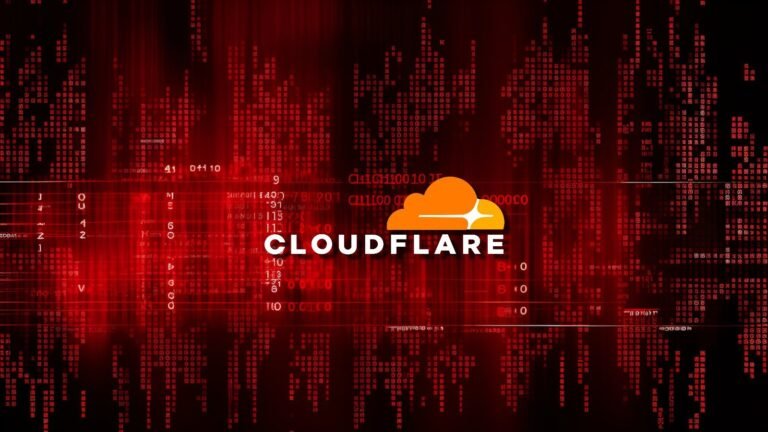Fast Facts
-
Outage Confirmation: Cloudflare reported that a significant service outage on October 10 was not a security incident and resulted in no data loss, beginning due to issues with the Workers KV system at 17:52 UTC.
-
Root Cause Identified: The outage, lasting nearly 2.5 hours, originated from a third-party cloud provider’s failure affecting the backend storage infrastructure critical for the Workers KV service, leading to a 90.22% failure rate in key operations.
-
Widespread Service Disruption: The incident severely impacted multiple Cloudflare services, including access, authentication, identity handling, and functionalities for streaming, images, and AI services, with significant service degradation noted.
- Future Resilience Plans: In response to the outage, Cloudflare will shift Workers KV storage to its own R2 object storage, reducing dependency on external providers and implementing safeguards to stabilize services during future storage failures.
The Issue
On a recent day, a significant service outage struck Cloudflare, affecting a myriad of services reliant on its Workers KV (Key-Value) system. This global key-value store, integral to a suite of Cloudflare offerings and external services like Google Cloud Platform, became completely offline at 17:52 UTC. The root of this disruption stemmed from a third-party cloud provider’s failure that compromised the underlying storage infrastructure of Workers KV, leading to a staggering 90.22% failure rate for uncached operations and cascading outages across various applications, including identity authentication and real-time interactions.
Reporting on the incident, Cloudflare’s post-mortem analysis clarified that no security breach occurred, nor was any data lost. The outage persisted for nearly 2.5 hours, revealing critical vulnerabilities in service dependencies. In response, Cloudflare has outlined a robust plan to enhance resilience by transitioning Workers KV to its own R2 object storage and implementing cross-service safeguards—efforts aimed at fortifying system integrity against future disruptions while minimizing reliance on external systems.
What’s at Stake?
The recent service outage experienced by Cloudflare, stemming from a failure in its Workers KV storage infrastructure due to a third-party vendor, underscores a significant risk not just to Cloudflare, but also to the myriad businesses and organizations dependent on its services. This outage precipitated a cascade of critical failures across multiple applications, including Google Cloud Platform, jeopardizing user authentication, session management, and data transactions that underpin many digital operations. As organizations increasingly rely on interconnected cloud services, such disruptions amplify vulnerability; if one service fails, it can trigger extensive operational paralysis across dependent systems. The resultant downtime could lead to financial losses, diminished customer trust, and jeopardized data integrity. Consequently, businesses must recognize the imperative of diversifying their service dependencies and implementing robust contingency plans to mitigate the substantial risks posed by such systemic failures. Cloudflare’s response, which includes shifting to its own R2 object storage and enhancing cross-service resilience, highlights the necessity of proactive measures in preserving operational continuity amidst an increasingly fragile cloud ecosystem.
Possible Next Steps
In the realm of cybersecurity, the promptness of remediation actions can markedly shape an organization’s operational resilience and stakeholder confidence.
Timely Remediation
- Incident Analysis: Conduct a thorough investigation to identify the root cause of the outage.
- Systems Restoration: Implement measures to restore affected systems to their operational state without compromising data integrity.
- User Communication: Inform stakeholders of the incident while reassuring them of data safety and recovery efforts.
- Performance Monitoring: Utilize real-time monitoring tools to assess system stability post-restoration.
- Documentation: Record all findings, actions taken, and time frames to aid future analyses and refine incident response protocols.
- Infrastructure Audit: Review and reinforce system architecture to prevent recurrence of similar outages.
- Staff Training: Conduct training sessions to equip personnel with skills to promptly identify and respond to non-security incidents.
NIST CSF Guidance
The NIST Cybersecurity Framework underscores the significance of timely detection, response, and recovery procedures. For further detail, refer to NIST SP 800-61, which delineates a structured approach to incident handling and management. This guidance can elucidate best practices in remediation strategies following outages unrelated to security breaches.
Stay Ahead in Cybersecurity
Explore career growth and education via Careers & Learning, or dive into Compliance essentials.
Explore engineering-led approaches to digital security at IEEE Cybersecurity.
Disclaimer: The information provided may not always be accurate or up to date. Please do your own research, as the cybersecurity landscape evolves rapidly. Intended for secondary references purposes only.
Cyberattacks-V1

